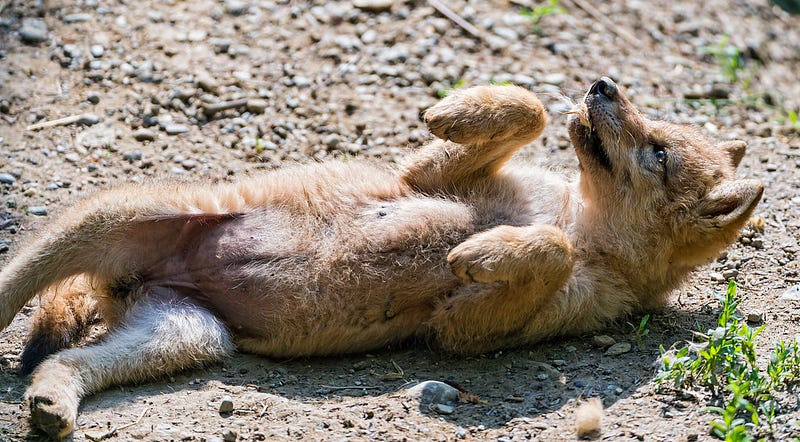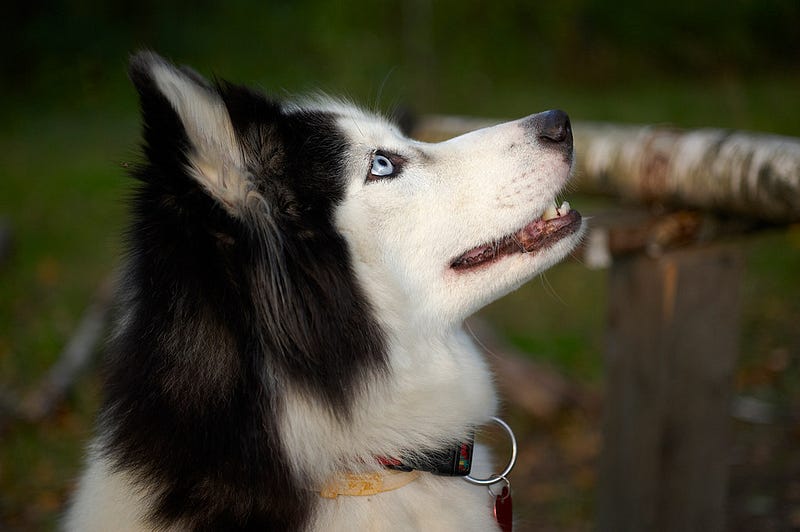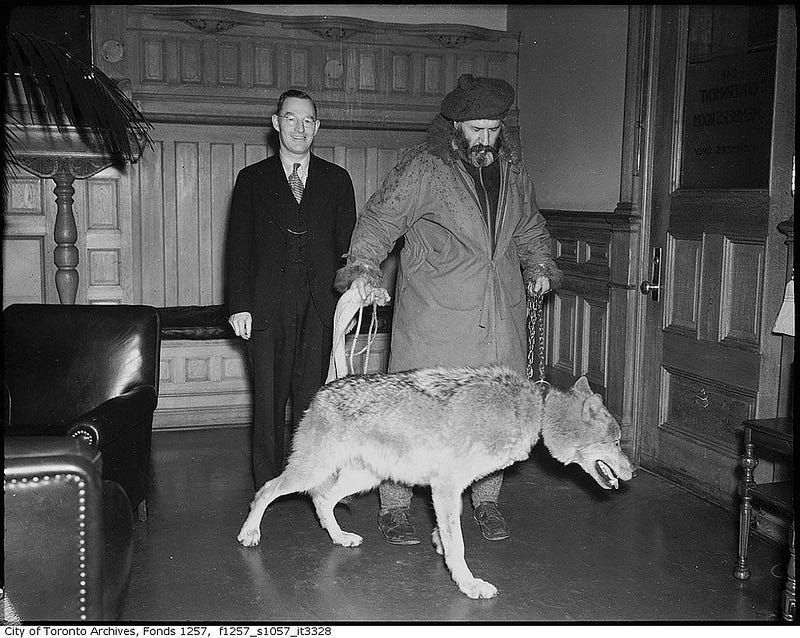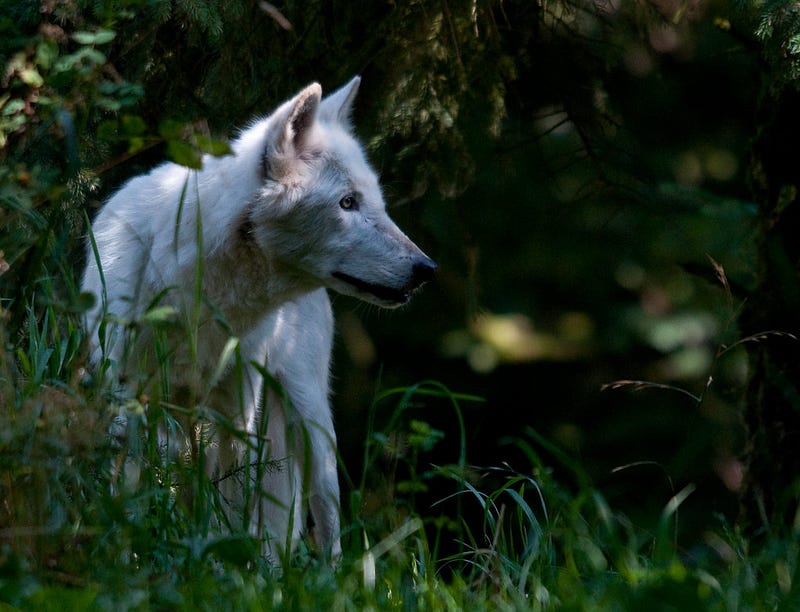# Understanding the Friendliness of Dogs Compared to Wolves
Written on
Chapter 1: The Nature of Domestication
Dogs and wolves share more similarities than many might realize.

It's a common misconception that captive wolves and other exotic pets are truly "wild." To clarify, I assert that an animal is "wild" if it originates from its natural habitat. In contrast, animals raised in captivity—particularly those that are hand-reared or well-socialized—exhibit distinct behavioral differences from their wild relatives.
This distinction does not imply that wolves mirror the behavior of typical household dogs. Domesticated dogs are unique among animals; they are considered the first domesticated species and are believed to have co-evolved alongside humans for thousands of years. This historical bond may have led to dogs developing a natural understanding of human cues, such as pointing, surpassing even that of our closest relatives, the chimpanzees.

However, there has been debate regarding whether this skill is innate or if it develops through early socialization with humans. A 2021 study revealed that even 8-week-old puppies, still living with their mothers, could comprehend pointing gestures.
While it's well-known that dogs are generally more sociable with humans than their wild counterparts, the biological basis for this difference remains a question. Research suggests that variations in hormonal responses in dogs, tied to their hypothalamo-pituitary-adrenal (HPA) axis and oxytocin systems, might explain their reduced fear and stress levels in human interactions. This phenomenon has been linked to Domestication Syndrome, which describes how certain traits, such as floppy ears and spotted fur, emerged in domesticated animals.
A notable study found that dogs exhibited increased urinary oxytocin levels when making eye contact with their owners, which was not observed in wolves. This evidence hints at an evolved feedback loop between dogs and humans.

Traditionally, it has been believed that domesticated animals have lower stress levels and heightened oxytocin activity, allowing them to thrive in human environments. In contrast, previous studies indicated that wolves displayed less sociability and higher stress hormones around humans. However, newer research is challenging these conclusions.
Some scientists question whether the conditions in which wolves were studied, typically in cages, biased the findings compared to pet dogs that experience significantly more human interaction during their formative years. The wolves in the studies were housed in outdoor enclosures within a pack, while pet dogs had formed strong bonds with their owners. This difference alters how each species interacts with humans, as pet dogs perceive these interactions as rewarding, unlike the caregivers of the enclosure-living wolves.
To further investigate the influence of early life experiences on hormonal and behavioral responses, researchers raised dogs in a similar pack environment as the wolves, allowing them to experience human contact akin to that of their wild counterparts. The subsequent tests comparing these "pack-living" dogs with both pack-living wolves and pet dogs yielded unexpected results.

The first experiment analyzed how both the pack-living wolves and dogs responded to a "bonded human" (the person who raised them) versus a familiar caretaker with whom they were not bonded. The researchers sought behaviors linked to stress and fear in dogs, such as yawning and licking, along with sociability indicators. They also measured glucocorticoid metabolite (GCM) levels, a stress hormone, and urinary oxytocin (OTM).
The findings showed that both wolves and dogs exhibited similar levels of interaction with their caretakers. Surprisingly, both species preferred spending time with their bonded caretaker, and their hormonal responses were also comparable.
The second phase of the experiment included pet dogs, who were expected to engage more with humans while demonstrating lower GCM levels and higher OTM. However, these dogs did not show a preference between the bonded and familiar caretaker, resulting in no significant behavioral differences.
The Conclusion of the Study
In essence, when dogs and wolves experienced similar socialization, their human-directed behaviors were not markedly different. The researchers concluded that the animals' previous experiences with humans had a significant impact on their behavioral and hormonal responses, suggesting that these differences stem more from life experiences than from genetic or domestication factors.
These findings support the Two-stage Hypothesis of domestication, which posits that human-directed behaviors in animals develop from their early life experiences. While further studies are warranted, this research raises important questions about the commonly held beliefs regarding domestication and its implications for understanding animal behavior.
I have developed a keen interest in dogs because they are perhaps the world's most popular pets and have significantly influenced human history and culture. They are often considered the quintessential example of domestication, showcasing remarkable variation from their wild ancestors—though recent insights suggest this narrative may be overly simplistic.
It’s crucial to recognize that dogs did not directly evolve from modern wolves, including those involved in the studies. The similar behavioral and physiological reactions observed in dogs and wolves when controlled for life experiences highlight the cognitive similarities between domesticated and wild animals. The concept of "domestication" itself is poorly defined in scientific literature, often failing to exist in the way people commonly perceive it.
Considering Pet Wolves
While the study did not explore raising wolves in a manner similar to pet dogs, it’s reasonable to assume that such an endeavor would pose challenges due to inherent species traits, including size. This distinction highlights the need for different environments and care strategies based on species-specific traits rather than simply categorizing animals as domesticated or wild.
Ultimately, the takeaway from this research—and others like it—is that if the boundaries of domestication between dogs and wolves are blurred, then the entire concept of domestication warrants a more thorough examination.
This video explores the domestication of wolves and the evidence supporting the strong bond between dogs and humans.
This video delves into the psychology behind the friendship between dogs and humans, examining the factors that contribute to this natural bond.